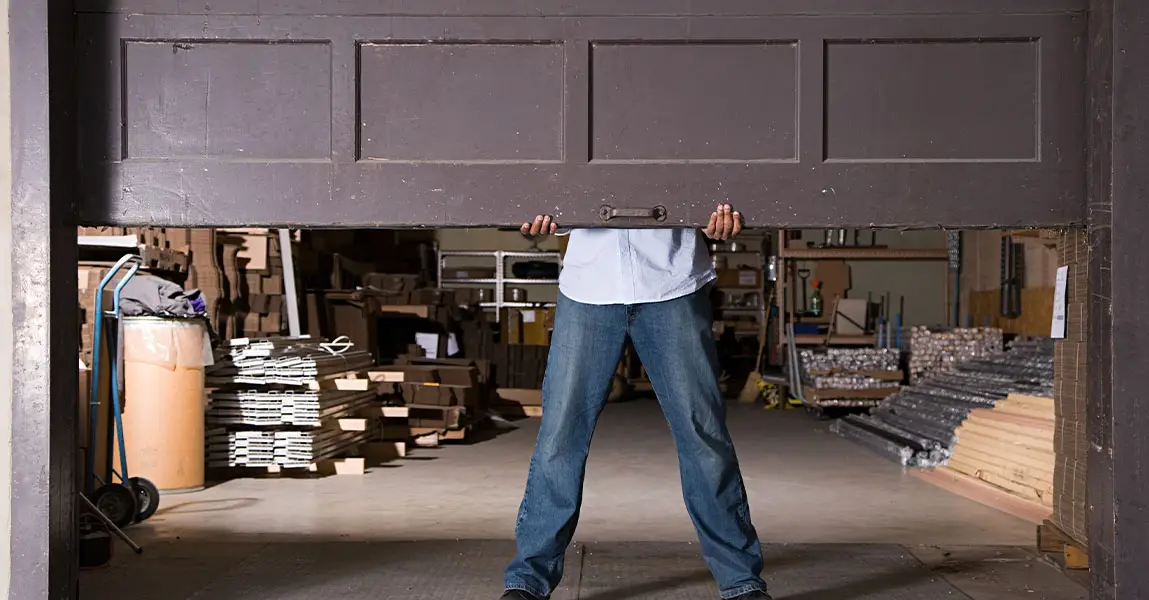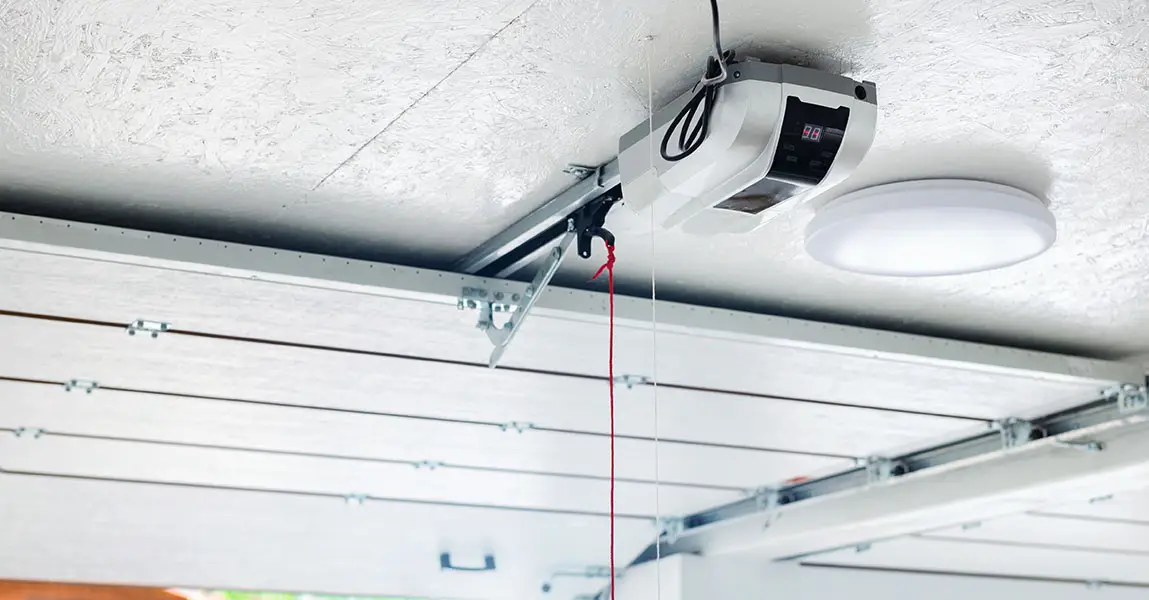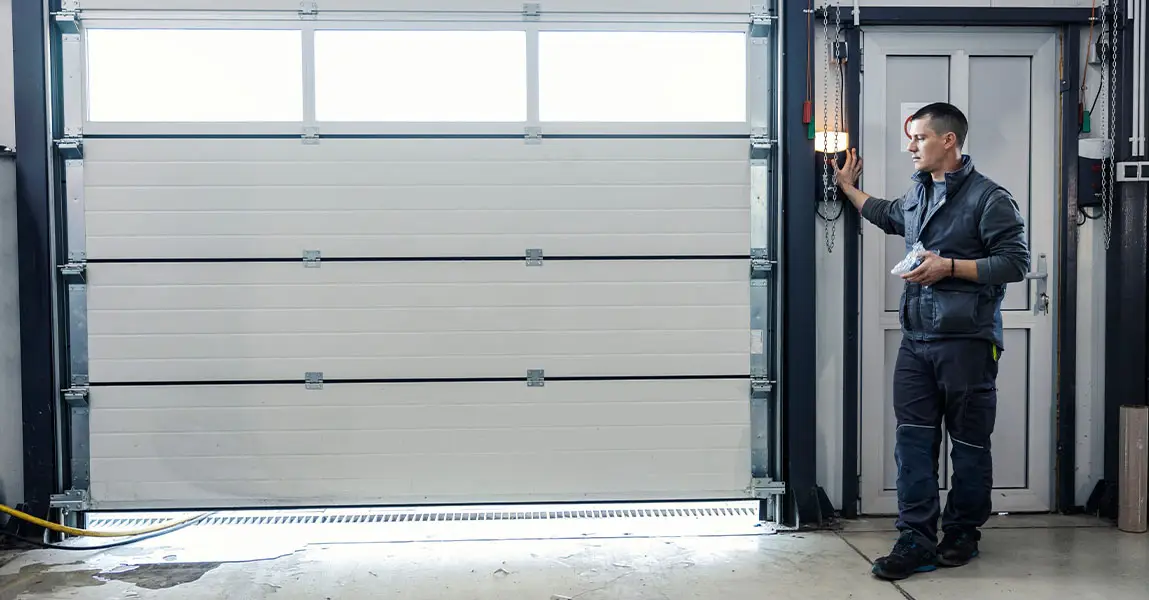When a garage door won’t open or close, the first reaction is usually frustration. However, this common issue can stem from several causes, and understanding them is the first step to resolving it. Most importantly, not all issues require a professional right away. That is to say, many garage door problems have simple explanations and straightforward solutions.
We often start by checking the power source. For example, unplugged openers or tripped breakers can stop a garage door system from working entirely. Similarly, dead remote batteries may seem like a bigger problem until replaced. Therefore, verifying power and remote functionality is always our first recommendation before diving deeper.
Checking Tracks, Rollers, and Door Alignment
Physical obstructions and track misalignments are frequent culprits. For instance, if there’s something stuck in the track or the rollers have popped out, the door won’t move properly. In other words, mechanical interference can be just as disruptive as electrical failure.
We advise checking both sides of the tracks for debris or warping. Likewise, rollers should glide smoothly. If they are stiff or derailed, the garage door opener may strain or fail entirely. On the other hand, if the tracks appear clean and even but the issue persists, the problem may lie elsewhere in the system.
Is the Garage Door Opener the Issue?
When the opener activates but the door doesn’t budge, it points to a different problem. In many situations, a disconnected or broken opener trolley prevents movement. That is to say, the motor may run, but without a functional attachment, the door stays still.
In addition, stripped gears or worn-out drive belts are common in aging openers. We recommend listening for strange noises or silence when you attempt to use the opener. For instance, a humming motor with no movement suggests internal wear. If opener failure seems likely, garage door opener repair services may be necessary to restore function safely.
Manual Lock Engagement and Safety Sensor Problems
A surprising number of homeowners accidentally engage their manual lock without realizing it. Therefore, if your door doesn’t budge even though everything seems fine, check the lock mechanism. It may sound simple, but this detail is often missed.
In other cases, misaligned or blocked safety sensors can be to blame. These sensors prevent the door from closing when they detect an object in its path. Consequently, dirt, cobwebs, or accidental bumps can knock them out of position. Realigning the sensors so they point directly at each other usually solves the issue quickly and effectively.
When Springs and Cables Are to Blame
Garage door springs and lift cables perform the heavy lifting, quite literally. A broken spring will often make the door feel unusually heavy or cause it to move unevenly. Most importantly, a broken torsion or extension spring can be dangerous to handle without training.
Similarly, frayed or snapped cables can stop the door mid-motion. These cables wind around drums near the top of the door, and if they come loose, the system loses balance. In these situations, it’s best to halt all use immediately. After that, it’s safer to rely on professional garage door repair Calgary services to replace the damaged components and re-tension the system correctly.
Weather Conditions and Frozen Garage Doors
In cold climates, garage doors may freeze shut. That is to say, moisture and ice between the bottom seal and the concrete can bond together overnight. When this happens, attempting to force the door open can damage the panels or strain the motor.
We recommend using a hair dryer or heat gun along the bottom seal to release the ice gently. However, never use boiling water, as it can cause cracking or refreezing. Once the door opens, inspect the weather seal for wear. Replacing old seals can prevent repeat occurrences in freezing temperatures.
Testing the Remote, Wall Button, and Circuit Board
When neither the remote nor wall button activates the opener, a deeper electrical issue might be present. In some cases, the wall button itself has failed. For instance, worn internal contacts can stop the signal from reaching the opener.
If the wall button works but remotes do not, reprogramming may solve the issue. Meanwhile, if neither works, and the unit has power, the logic board inside the opener might have failed. Replacing it is delicate, and at that point, garage door opener installation becomes a smart long-term solution.
When It’s Time to Call a Garage Door Technician
Sometimes we can troubleshoot all the basics and still not resolve the issue. In those cases, internal mechanics or advanced electrical faults may be at play. Most importantly, forcing a door open or tampering with high-tension springs can result in personal injury or further damage.
That’s why we recommend pausing and reaching out to a technician when basic fixes don’t work. A technician can quickly diagnose the root cause, identify worn or malfunctioning components, and make the necessary repairs safely. If the door was already struggling before it stopped working, a full inspection can uncover hidden wear that would’ve caused problems later anyway.
Preventative Maintenance and Long-Term Reliability
The best way to avoid emergencies is regular maintenance. For example, lubricating moving parts every few months helps reduce wear. Likewise, checking alignment, spring tension, and opener response helps us catch minor problems before they grow.
We always remind customers that prevention costs less than emergency repairs. That is to say, keeping your door clean, aligned, and properly lubricated can double its lifespan. Our team follows a standard maintenance checklist during inspections that allows us to address issues like cable fray, track bending, or motor misalignment early.
How to Safely Manually Open Your Garage Door
During a power outage or opener failure, manual operation is essential. First, pull the emergency release cord—usually red—downward to disengage the opener from the door. After that, lift the door slowly and evenly using the handle.
However, if the door feels jammed or extremely heavy, do not force it. That is usually a sign of a broken spring or stuck roller. Forcing it could result in a door crashing down unexpectedly. Instead, we recommend scheduling a service call as soon as possible to ensure it opens safely under normal use again.
Understanding the Most Common Garage Door Faults
Over time, garage door systems show patterns of failure. Most often, we see issues with worn springs, remote malfunctions, misaligned sensors, and stripped drive gears. Likewise, damage from vehicles, storms, or poor installation can cause premature wear.
Knowing these patterns helps our customers recognize early warning signs. For instance, a squeaking opener, rattling track, or delayed remote signal should never be ignored. These indicators point to larger issues building beneath the surface. Therefore, documenting strange sounds or movements helps our team during diagnosis and speeds up the repair process.
FAQ
1. Why does my garage door reverse when I try to close it?
This usually happens because the safety sensors are misaligned or blocked. Even a slight obstruction, like dust or sunlight glare, can trigger the auto-reverse feature for safety.
2. What should I do if the garage door opens halfway and stops?
Partial movement is often related to broken springs, damaged rollers, or limit settings on the opener. We recommend inspecting visible hardware first and avoiding repeated attempts to operate it.
3. Can cold weather prevent my garage door from opening?
Yes, especially if ice has formed under the door or affected the track lubrication. Gently warming the seal area and checking for frozen parts often resolves the issue.
4. Is it dangerous to replace a garage door spring myself?
Yes. Springs are tightly wound under high tension and can cause serious injury if mishandled. It’s best to leave spring replacement to experienced professionals with the proper tools.
5. Why won’t my remote work even after replacing the batteries?
If new batteries don’t help, the issue might be signal interference, logic board failure, or the need to reprogram the remote. Try operating the door from the wall button to test further.










